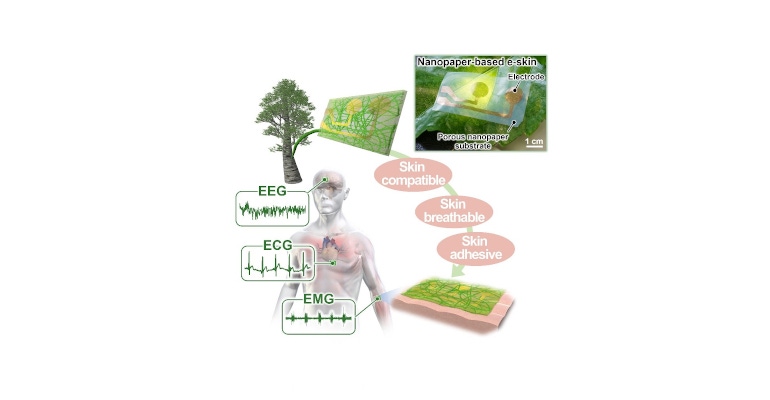Researchers in Japan have used cellulose to create a lightweight, durable, and comfortable material that can pick up electrical signals from the body.
May 23, 2023

A research team in Japan has designed what they believe is the most comfortable e-skin to date by using a wood-derived material to create a lightweight, durable, and comfortable material on which to attach on-skin electronics.
Researchers from Osaka University have designed an electrode substrate made from cellulose, a natural material derived from wood from which they created a paper-like material comprised of tiny nanofibers.
Dubbed a "nanopaper e-skin," the material has tiny gaps between its fibers for which researchers can control the size, creating a material that has two key qualities for a successful e-skin, said Teppei Araki, assistant professor at Osaka University, who worked on the research. The idea of an e-skin is to be a comfortable fabric that can use interwoven sensors to wirelessly gather data from the body.
“To get the best possible electrical signal it is important for a substrate to make good contact with the skin, which means it must be smooth," he said. "However, many examples of smooth materials are also very dense which severely reduces their breathability and results in user discomfort."
However, the nanopaper is a mesh composed of fine fibers, which means it maintains good contact with the skin but also allows water vapor to pass through, the researchers said. This reduces inflammation and makes it comfortable for the wearer, they said.
Old Concepts, New Design for e-Skin
Neither the development of e-skins nor the use of cellulose as a material in scientific practice are new concepts. Scientists already have developed materials suitable for use as e-skins that use magnetic fields to turn a person into a compass or can control a person's body temperature through heating and cooling, among other inventions.
Moreover, scientists already have found myriad uses for cellulose, including in the development of a sponge that can remove color from harmful dyes, and a biomaterial that's stronger than both steel and spider silk.
The nanopaper developed by the team showed promise in laboratory experiments, demonstrating the ability to stick to the skin given the action of the water in the pores, the researchers said. It could withstand 100 cycles of deformation while worn on a person's forehead while maintaining function and also could be sterilized at high temperature, they reported in a paper on their work in the journal Advanced Materials Interfaces.
This demonstration of both compatibility with the human body and the surrounding environment, along with its thermal stability, durability, and flexibility, make the e-skin well-suited for electrophysiological health monitoring, the researchers reported. Potential applications for the nanopaper e-skin include gathering EEG, ECG, and EMG signals for medical tests, they said.
About the Author(s)
You May Also Like



